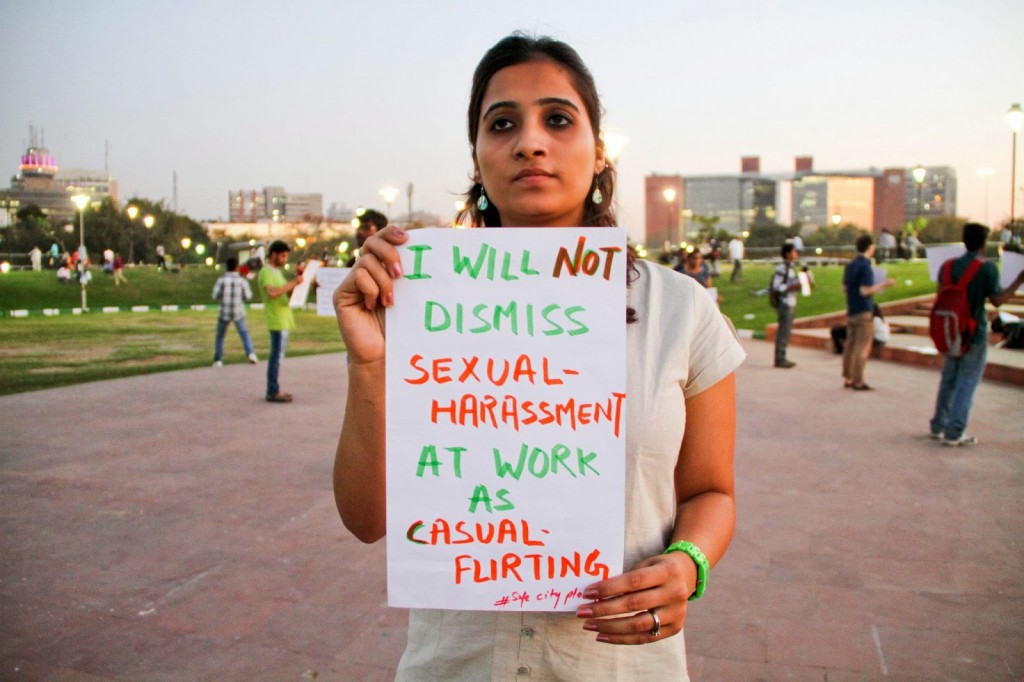If the life of law has been its experience, then the body of law that addresses sexual harassment in India can be described as lifeless. Without a careful understanding of the development of sexual harassment, the relevant law in India accords inappropriate sanctions to the offense. The essay will briefly examine the theoretical problem in determining punishments for illegal acts. After a comparison of the sexual harassment law in India and the United States (where the concept has significantly developed), an attempt will be made to understand the problems with the current sanctions on sexual harassment prescribed under Indian law.
THE CREATION OF AN OFFENSE
To understand the nature of sexual harassment as a legal wrong, it is necessary to understand the category of wrong (civil or criminal) it is classified under. This is not an easy task, since the distinction between these two categories is contentious. The traditional criminal-civil distinctions are no longer discern-able in modern day jurisprudence, since the characteristics of both classes of wrongs have become increasingly similar. For instance, strict liability and vicarious liability are imports from criminal law that have been frequently used to punish individuals for the violation of administrative rules. In the same way, punitive damages have been frequently used for civil wrongs.
While some theorists feel that the practical solution is to abandon the distinction altogether, several are understandably comfortable with retaining the labels. The separate existence of criminal law has been justified on several grounds – that it is a system of retributive justice, that it is an indispensable legal tool for social cohesion, or that it is a means to address a ‘public wrong’, to name a few. These grounds can be explained by examining the implicit belief that the label of a criminal offense conveys severe condemnation (often on moralistic grounds) compared to the label of a civil offense. This is where Devlin raised a contentious point – in making a moral judgment that an act must be treated with severity, the law takes into account the rights and interests of the society while harming those of the individual.
The purpose of encapsulating the debate on the criminal-civil distinction is to demonstrate the problem sexual harassment faces. For certain acts, determination of appropriate sanctions becomes difficult since the moral position may not be clear for such acts. Pornography is an example of an act where the moral position is ambivalent – while laws seek to protect the public from indecent displays, liberals believe that such sanctions are an infringement of the individual’s rights. While it may be largely acceptable to punish sexual harassment, it is the extent of punishment which becomes unclear due to differing moral and theoretical positions.

The ‘what’ and the ‘why’ of sexual harassment:
How can sexual harassment present a moral dilemma? At the outset, it is important to note that there appears to be a consensus on the basic elements that comprise sexual harassment. Inevitably, among several proposed definitions of sexual harassment, a universal feature is that the act (verbal or physical) is construed as misbehavior and is ‘sexual’ in nature. There is little disagreement regarding the ways in which sexual harassment may manifest – such as quid pro quo harassment (which can also be described as sexual bribery or sexual coercion) and hostile work environment (that is detrimental to the health and productivity of the abused).
There are two difficult questions that arise while dealing with sexual harassment:
a) What is the precise nature of the act that can be considered sexual harassment? In other words, how does one determine whether the act is serious enough to be considered as sexual harassment, or a trivial complaint?
b) What is the appropriate punishment for sexual harassment?
These questions are closely interlinked with the different theories of sexual harassment. At this point, it is useful to begin with two influential schools of thought which commenced the debate on sexual harassment in the United States. One of the earliest schools believes in the ‘Dominance Theory’, formulated by Catherine MacKinnon. She defined sexual harassment as the ‘unwanted imposition of sexual requirements in a context of a relationship of unequal power’. The implicit understanding of sexual harassment in this theory is that in all hetero-sexual relationships, there is bound to be assertion of power by males, which is manifested as sexual harassment. It essentially views sexual harassment as sex-based discrimination. Another school follows the Feminist approach. While agreeing with MacKinnon’s view that sexual harassment is more of a social rather than individual harm, this theory views sexual harassment as sex discrimination aimed not on particular women, but on women as a group. Both theories strongly oppose a tort based approach for sexual harassment, as it would treat sex-based discrimination as a gender-neutral tort of battery or assault, thereby reducing the social significance of sexual harassment. The appropriate punishment, according to them, is a sex-discrimination law, which focuses on the violation of the rights of the individual or group.

The punishment conceived here is not merely an academic viewpoint. For a significant period of United States legal history, sexual harassment was viewed as sex-discrimination, following the use of MacKinnon’s theory in Alexander v Yale. This was later reinforced by the guidelines issued by the Equal Employment Opportunity Commission. Thereafter, courts found environments comprising elements such as sexist name-calling, sexist graffiti and pornography as sexually hostile environments, since they were inherently discriminatory of women as a group.
The problems with these theories became evident in the subsequent cases handled by the courts. As a logical consequence of treating sexual harassment as gender discrimination, all acts of physical violence and hazing were construed as sexual harassment, even if they were not of sexual nature. Conceptually, the methodology of determining sexual harassment was unrealistic. The former theory classified sexual harassment as any behavior that the harmed individual claimed was harming her – such a method of determining sexual harassment was entirely subjective. The latter theory, on the other hand, saw any attack against women as a group as an attack against the individual woman concerned, even though the individual did not feel harassed. Moreover, as demonstrated by Onacle v. Sundowner Offshore Services Inc., the theories were inadequate to address same-sex harassment, or harassment of men.
This problem gave way to a tort-based approach, which ensured that the complainant had a say in what he/she considered as sexual harassment, instead of penalizing an individual merely on sexist behavior. However, this did not solve the core issue of the subjectivity of sexual harassment – while certain sexual acts were deemed by some as unlawful because they are coercive or discriminatory, others viewed such complaints as ‘annoying’ and insignificant from the point of view of law. In Kunin v. Sears Roebuck & Co. mere staring or name-calling did not constitute sexual harassment; in the same year, Hurley v. Atlantic City Police Dept held that the use of vulgar words in the absence of the complainant counted as sexually harassing behavior. Perhaps this confusion inspired F.M Christensen to reject sexual harassment as an offence altogether, for the reason that it lumped together major and minor offences and prescribed the same level of punishment for all such offences.
From this account, one arrives at the conclusion that the two problems initially posed have no definite answers. Judicial decisions on sexual harassment were, and continue to be, dependant on the development of political and moral theory, which has till date offered no definitive solution.

CONCLUSION
The dilemma of sexual harassment demonstrates the larger issue of the criminal-civil distinction. Different theories of sexual harassment conceptualize different forms of punishment – under the gender-discrimination theory, an individual infringes on another’s right. Under a more liberal theory, the individual commits a tort. Under Indian law, however, the individual may have either committed a criminal offence, or a civil one (depending upon which course of action the alleged victim takes). It appears that the provisions under the IPC are a reflection of a belief that women must be protected, as against other gender-based theories which advocate that women must be respected.
Equating a relatively harmless act of sexual harassment to a criminal offense is a clear miscarriage of justice. The solution lies in identifying patriarchal elements and replacing them with a law that is consistent with theory and practical realities. If the effort is to empower institutions to administer suitable environments, then Sections 354 and 509 of the IPC have little relevance. At best, courts should determine acts of sexual harassment as criminal in nature only when the act is significantly serious in nature. Without keeping in mind the possible outcomes of a decision, the law of sexual harassment will continue to be a blind eye to its objectives.
( I want to thank my friends to help me out and to motivate me to write this article without their views and ideas it would not have been possible).
By HARSHVARDHAN SINGH.




2 Comments